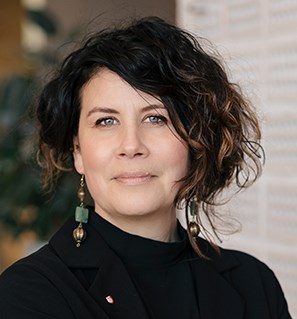Vice-chancellor's blog: Life exists in the space between
During an unexpected feeble moment, I promised to present a haiku at the re-opening of the University Library in January. For persons like me, writing poetry in general and the Japanese form more specifically, brushing up on the rules was of utmost necessity. Particularly on how to measure poetic metre. Short. Succinct. Most of all, what catches my attention in haiku as an art form, is the emphasis on that which is not said, because “most things exist in the space between.”

The problem? Is launching strategic initiatives a problem? Do we view it as a problem in our daily lives when the spotlight is not on us, but instead simply pans over that which is meant to be something special, perhaps out of the ordinary? Does a lack of splendour mean that our daily lives are gloomy?
What does it mean for Regular Activities when Strategic Initiatives get the bulk of attention? Does the space for day-to-day activities shrink? Does crowding make for difficulty in breathing, or close company? Do the tensions create envy, competition and stress, or an enriching contribution and new intellectual challenges?
Developing is exciting. Designing strategic initiatives is motivating. But it should not be to the detriment of quality in our regular activities. And one thing is sure – activities that engage us, also demand a lot from us. Or as one of our deans put it during an operations meeting, “we’ve gone from a resource overload to an organisation overload.” Something that demands respect.
At our university board meetings, I continually have had the benefit of presenting which strategic initiatives that have been introduced, especially within teaching over this past year. These are abundant and far-reaching. For example, our senior lecturers specialising in teaching and learning in higher education, increases at PIL, overhead investments, development in our learning environments, administrative assistance for teaching reinforcement, digital tools. And so on. All to retain high quality in everything we do in and around our study programmes, and which affect many people – students, teachers and administrative staff.
In 2018, Örebro University invested approximately SEK 30–35 million in strategic initiatives within education. Since most of these initiatives span over several years, this means significant investments not only this year but also in the coming years. And these are substantial. They give a positive echo throughout the organisation – and attract a lot of attention in our sector. Which we are happy about, of course. We want them to represent something positive for our university. And we are convinced they do.
At the same time, this is only a fraction of our operations. Most of which are day-to-day activities, wouldn’t you agree?
If the seventeen syllables in our haiku are our strategic initiatives – that we talk about and point the spotlight to – then the space between is day-to-day activities, yours and mine? In terms of finances, our annual funding for education is around SEK 800 million. A fantastic amount of money. Our strategic initiatives are around four per cent of the total investment in our study programmes. In my opinion, this means we put a high priority on our day-to-day life. Begging the question, is it then fair to view our daily lives as the space between?
This all depends on how we view daily life, and what the space between means. Our strategic initiatives can help us to be more than visible, perhaps acting as the locomotive, the enabler, helping to put the university on the map. Still, they would never have been possible without the organisation that we have built together. That, along with significant work done every day, forms the foundation on which we stand, upright and secure. Which is something to uphold. That we sometimes miss the spotlight, should not mean that we lose sight of the long-term goals. Leaving us wandering in the dark. We are not the sky above us, with twinkling stars and dark space in between. Life exists in the space between. And ours is spectacular.
Anna-Karin Andershed
Deputy Vice-Chancellor
Translation: Jerry Gray
